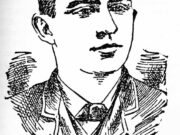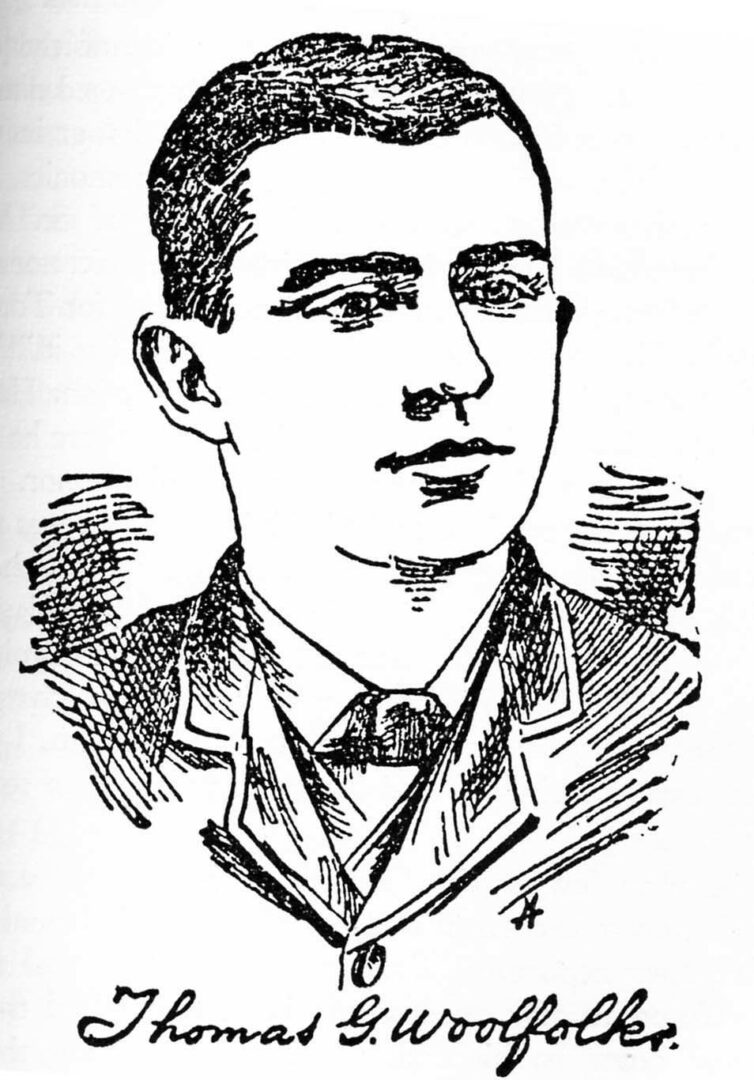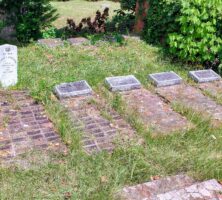The most infamous crime in nineteenth-century Georgia occurred in Bibb County, about twelve miles west of Macon, in the early morning hours of August 6, 1887, when Tom Woolfolk (pronounced WUHL-fork) murdered nine members of his family with an ax.
Background
Thomas G. Woolfolk was born on June 18, 1860, in Bibb County, to Susan Moore and Richard F. Woolfolk in the farmhouse on his father’s large cotton plantation, the same house where the murders occurred twenty-seven years later. His mother, who was from Athens, in Clarke County, married Richard Woolfolk in 1854, the year he graduated from the University of Georgia. Tom was the third child and only son of his parents.
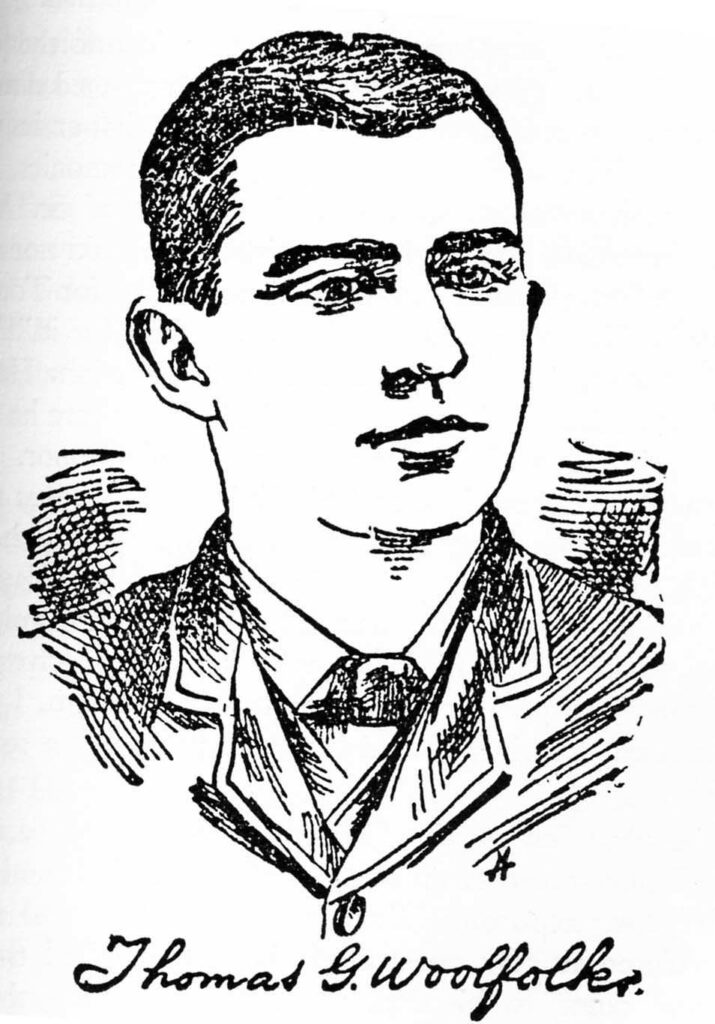
Drawing from Oglethorpe Echo
Shortly after his birth, Tom’s mother died, and he and his sisters were sent to live with a maternal aunt in Athens. Tom’s father, a businessman and landowner, remarried in 1867, and shortly thereafter Tom moved back to Bibb County to live with his father and new stepmother, Mattie Howard, at his father’s farmhouse.
Tom Woolfolk was quarrelsome and irascible by nature and noticeably mentally deranged. Those who knew him thought he was “a sharp, cunning, dissipated, unscrupulous fellow” and “a very perverse, obstinate, eccentric and . . . a cranky sort of a person.” Georgia Bird, a young woman who married Woolfolk but left him within three weeks and later divorced him, said that he “is not crazy. It is simple meanness. He is the meanest man I ever saw, and there is nothing too mean for him to do.” Woolfolk hated his stepmother and strongly disliked the six children born as a result of his father’s remarriage. His ill will toward his father’s new family was heightened by the belief that they stood in the way of his inheriting his father’s properties.
The Murders
Between 2 a.m. and 4 a.m. on Saturday, August 6, 1887, nine members of the Woolfolk family were brutally murdered with an ax: Tom’s father, fifty-four; Tom’s stepmother, forty-one; their six children, Richard Jr., twenty; Pearl, seventeen; Annie, ten; Rosebud, seven; Charlie, five; and baby Mattie, eighteen months; and Mrs. Temperance West, eighty-four, an aunt of Mrs. Woolfolk. The only inhabitant of the farmhouse not slain was Tom Woolfolk, who before daybreak sought help from neighbors, claiming that his father’s family had been murdered and that he had escaped death only by jumping out a window. Woolfolk then returned to the house before anyone else got there. He later claimed that he moved from room to room to confirm that everyone was dead, and that he heard the unknown killers exit the back way, slamming the fence gate behind them. He then washed himself and flung his blood-stained clothing down a well.
Within hours several thousand people had rushed to the Woolfolk home, and a coroner’s inquest was held on the spot. Suspicion immediately focused on Woolfolk. He had specks of blood in his ears; there was a bloody handprint on his leg; he behaved oddly (showing no emotion about the tragedy and appearing more apprehensive than grief-stricken); and his explanation of why he alone had survived seemed unlikely. There was no evidence of forced entry or theft. The coroner’s jury therefore concluded that Woolfolk was the murderer, but even before the verdict was rendered the sheriff had quietly conveyed Woolfolk to jail, to prevent the angry crowd from lynching him.
The murders electrified Georgia and the nation and were the subject of immense newspaper coverage, including an article that appeared on the front page of the New York Times the day after the slayings. Much of the press coverage was sensationalistic. The Greensboro Herald and Journal called the crime “more bloody, more fiendish” and exhibiting “a deeper depravity” than any crime ever committed in the state. The press nicknamed Tom “Bloody Woolfolk,” and the case was the most-publicized criminal proceeding in Georgia’s history.
The Trials
Woolfolk was indicted on nine counts of murder but tried only for the murder of his father, and the trial began in the Superior Court of Bibb County on December 5, 1887. After only twelve minutes of deliberation, the jury convicted him on December 15, and the same day he was sentenced to death. On February 11, 1889, however, the Supreme Court of Georgia granted Woolfolk a new trial because the trial court had permitted the introduction of damaging but inadmissible testimony, and also because it had done nothing when during closing arguments courtroom spectators, referring to Woolfolk, had shouted “Hang him! Hang him! Hang him!”
After the Supreme Court decision, Woolfolk was granted a change of venue. The retrial began on June 3, 1889, in Perry, in the Superior Court of Houston County. On June 24, after deliberating for forty-five minutes, the jury convicted Woolfolk, who was sentenced to death the following morning. On July 28, 1890, the Georgia Supreme Court upheld the conviction and sentence.
At his retrial, as at his first trial, Woolfolk made an unsworn statement to the jury denying guilt. At both trials, however, the evidence of Woolfolk’s guilt was overwhelming.
Woolfolk was hanged in front of a crowd of 10,000 people on Wednesday afternoon, October 29, 1890, in Perry. The site of the hanging was the usual place of public execution in those days in Perry, a natural valley where Big Indian Creek joins the Fanny Gresham Branch, about a quarter mile west of the Houston County Courthouse. While on the scaffold Woolfolk disappointed the crowd by once more professing his innocence.
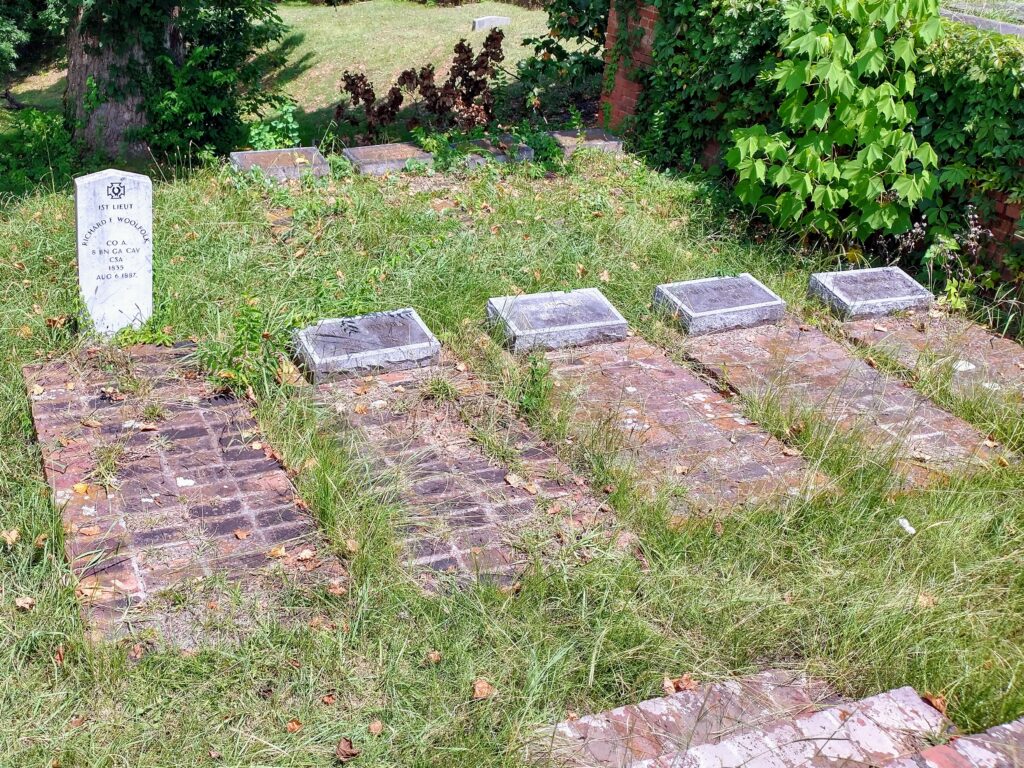
Photograph by amanderson2
Tom Woolfolk lies buried near one of his sisters at Orange Hill Cemetery in Hawkinsville, in Pulaski County. His tombstone is almost illegible and was recently repaired after being vandalized. His nine victims are buried in two rows (their graves topped by red brick overlays) in the family plot at Rose Hill Cemetery in Macon. The individual graves were originally unmarked. Sometime after March 2005 headstones were placed on each grave. A marble step leading to the grave site contains the name “Woolfolk.”


